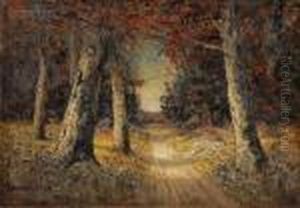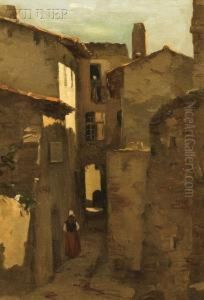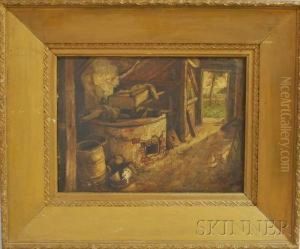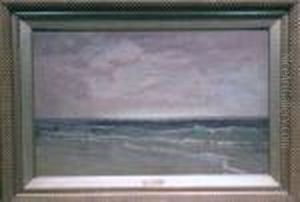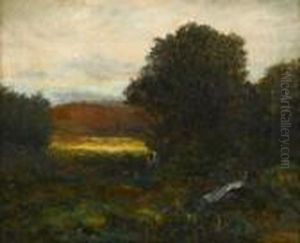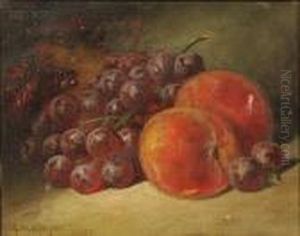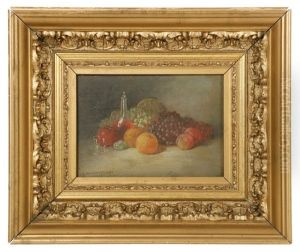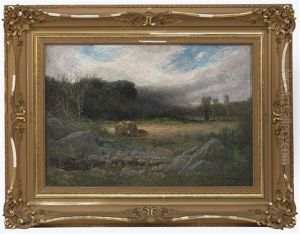George William Whitaker Paintings
George William Whitaker was an American artist known primarily for his landscape paintings. Born on March 25, 1841, in Fall River, Massachusetts, Whitaker developed an interest in art at a young age. In pursuit of his passion, he traveled to Europe to study, which was a common practice among American artists of the time. He trained at the Royal Academy in Munich, Germany, where he was exposed to the techniques and styles that would influence his later work.
Whitaker returned to the United States and settled in Providence, Rhode Island, where he would spend the majority of his life. He became a pivotal figure in the art community of Providence and was a founding member of the Providence Art Club, an organization that played a significant role in the cultural life of the city. Whitaker also taught art, influencing a generation of artists through his position at the Rhode Island School of Design.
In his artwork, Whitaker is often remembered for his atmospheric landscapes, which frequently depicted the New England countryside. His use of light and shadow, along with a subdued palette, contributed to the tranquil and often moody quality of his paintings. Whitaker's landscapes reflected the influence of the Tonalist movement, which emphasized the use of color and tone to create harmonious and emotionally evocative scenes.
Throughout his career, Whitaker exhibited his work at various venues, including the National Academy of Design and the Boston Art Club. His paintings were well received, and he garnered respect and recognition from his peers and art critics alike.
George William Whitaker passed away on February 21, 1916, in Providence. His legacy endures through his contributions to the American art scene, particularly in the field of landscape painting, and his role in fostering the arts in Providence. His works are part of several collections and continue to be appreciated by art enthusiasts and scholars.





